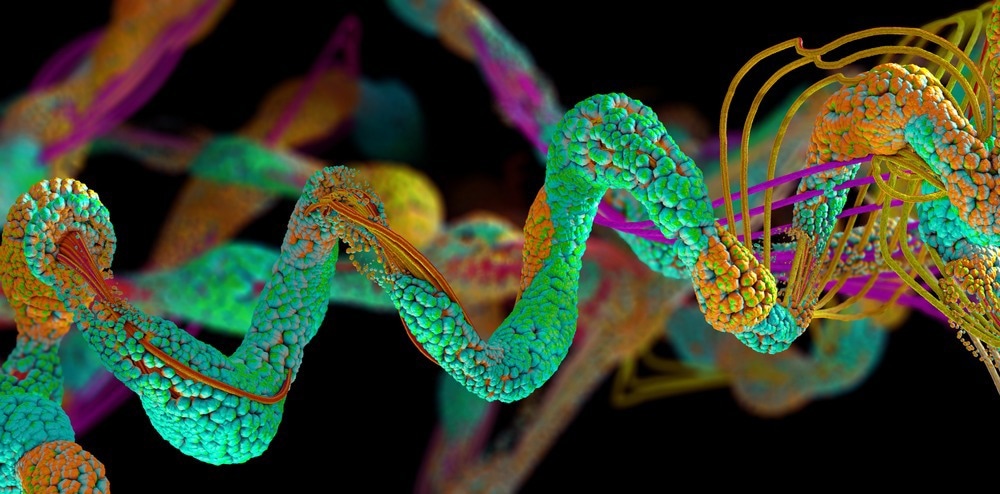Written by Keynote Contributor, Crystal Girod, Senior Product Manager at Beckman Coulter Life Sciences.
Proteomics is the area of research that studies protein expression, interactions, function, structure, and post-translational modifications. It can detect and quantify all the modifications and complex interactions of the proteins within a sample, which means this technique holds great potential for identifying therapeutic biomarkers for drug development as well as targeted treatment with precision medicine. This prospect is backed by significant financial investment—the global proteomics market is expected to grow by 14.6% and reach $72.9 billion in total market revenue over the next five years.
Yet, despite clear promise and growth in this field, challenges in the sample preparation stage are a major hurdle that can restrict proteomic research from reaching its full potential. The reliance on heavily manual processes, shortage of trained staff, and lack of standardized methods limit reproducibility and often lead to errors, resulting in mischaracterization. These bottlenecks limit the reliability of proteomics for widespread adoption in research and development for diagnostics and therapeutics.
In the face of these challenges, laboratory automation must be embraced as the solution to clear hurdles and sustain growth.
Prevalence of manual workflows
Recent advances in liquid chromatography-tandem mass spectrometry (LC-MS) have enabled scientists and clinicians to analyze thousands of protein markers in a single sample. However, the quality of the LC-MS analysis hinges on the sample preparation stage, a critical juncture that affects the accuracy, reproducibility, and throughput of the results. This is because sample preparation workflows in proteomics are still highly manual and time-consuming, making the process prone to human errors.
To ensure successful runs, technicians must be highly skilled and trained to perform specialized procedures such as cell lysis, protein extraction and separation, reduction and alkylation, digestion, and peptide assays on many samples. Each of these techniques is repetitive and meticulous, involving many manual pipetting steps and requiring significant sorting and tracking of samples through each experiment.

Image Credit: Christoph Burgstedt/Shutterstock.com
The nature of these laborious, manual tasks presents opportunities for error. When technicians must handle hundreds of samples a day, errors often arise no matter how engaged or well-trained they are, wasting time and money. Given the risk of error in these workflows and the hands-on time required, the throughput of a single individual is limited in scalability as demand increases manually.
Shortage of trained staff
Proteomics experiments are done by technicians and scientists who are deeply knowledgeable in analytical techniques and trained to perform detailed work on many samples. They perform indispensable tasks in the laboratory, from running protein gels to the end-stage statistical analysis. It takes years to hone these technical skills, making replacing technicians difficult. This pain point is felt even more strongly when there are staff reductions.
There is currently a critical shortage of laboratory technicians, with many leaving the workforce due to burnout. This is not surprising, given that laboratory workers are handling ever-increasing workloads, which can easily lead to physical and mental exhaustion.
Without adequate personnel, many laboratories face backlogs, and there could be samples that cannot be processed in time to deliver urgent results to patients or accelerate lifesaving drug research.
Laboratories that are short-staffed also will not have the resources to train new, inexperienced hires, which can further degrade the reliability of the results. Simply put, there are insufficient trained personnel to keep up with the sample preparation experiments to sustain the growing demand for proteomics.
Lack of standardization in research
The sample preparation stage also faces the challenge of relying on bespoke research methods, or methods lacking standardization, rather than standardized laboratory techniques. Currently, scientists commonly perform workflows developed from scratch, using techniques for sample preparation that are tailor-made in each laboratory. These proteomics experiments are carried out in isolation in individual laboratories using in-house protocols. This makes comparing results across different organizations a complicated matter.
In addition, each scientist has variations in their individual techniques, making it difficult for experiments to be reproduced by others. The lack of standardized protocols and repeatable platforms makes reproducibility a glaring issue and hinders the sharing and adoption of analysis techniques with other organizations.
Without standardization, the challenge with using bespoke methods is that they will remain limited to a handful of specialized laboratories, reducing the availability to the masses. Ultimately, this limits industry knowledge and slows down the development of crucial new diagnostics.
Automation: alleviating bottlenecks
In response to these aforementioned challenges, automation has been brought to the forefront as the solution to manual sample preparation, staffing, and standardization issues. Automation has clear benefits—it takes over the many manual activities of lab personnel, minimizing the opportunities for user-derived errors as well as sample-to-sample variation. This is a tangible process improvement that will reduce the number of failed tests from human error, minimize potentially life-threatening misdiagnoses, and improve the reliability of proteomics data. Automation also provides opportunities for organizations to increase productivity and efficiency. Samples are easily processed at higher speed and throughput. For instance, it could require the entire shift of a skilled technician to pipette and run 384 samples, but an automated liquid handler tackles that workload in approximately one hour.

Image Credit: urfin/Shutterstock.com
Automated workflows can also be optimized to process smaller sample volumes due to higher precision and reduced risk of sample loss—a particular benefit when dealing with sensitive clinical samples that have low concentrations and are extremely invasive to collect from ill patients.
Take bone marrow sample collection, for example, in which a needle pierces through the hip to collect the necessary fluid. Recovery time for the patient often takes several weeks, making a re-sample need out of the question.
Finally, automation provides significant cost savings. Errors and failed tests result in wasted chemicals and staff hours, and employee attrition from burnout hinders productivity. Yet automation instrumentation operates as instructed with exact precision, allowing the same workflow to be replicated thousands of times while achieving the same standard of accuracy, lifting the burden from skilled technicians. Furthermore, with automation optimization freeing staff of grueling manual workflows, they can apply their expertise to more complex research and value-added tasks.
Standardization to accelerate research and diagnostics
While automation will invariably alleviate laboratory bottlenecks, its implementation is not without difficulties that must be considered. Finding the right combination of sample preparation techniques, chemistry, and analytical methods that work well across different sample types and optimizing this process for scale and reproducibility remain major challenges for automating proteomics workflows.
However, it is undeniable that automation will greatly benefit laboratories, drug developers, and patients once this goal is achieved. By standardizing sample preparation, experiments, and results can be easily reproduced by multiple organizations, making it easier to share results and protocols and reducing reliance on customized methods. Standardizing methods through automation also allows these complex analysis techniques to be available to more stakeholders.
Sample preparation for proteomics, which would normally require an army of highly skilled scientists and technicians to run, can now be easily adopted by a wider variety of organizations beyond specialized labs. This will ultimately accelerate research and development as well as reduce costs.
Embracing automation is crucial to relieving current bottlenecks and sustaining a future where both organizations and patients benefit from the rapid development of diagnostics and treatments made possible through proteomic research.
References
-
www.marketsandmarkets.com. (n.d.). Proteomics Market | By Product, Reagent, Application | Global Forecast to 2026 | MarketsandMarketsTM. [online] Available at: https://www.marketsandmarkets.com/Market-Reports/proteomics-market-731.html.
- Stone, J. (n.d.). We’re Facing A Critical Shortage Of Medical Laboratory Professionals. [online] Forbes. Available at: https://www.forbes.com/sites/judystone/2022/04/28/were-facing-a-critical-shortage-of-medical-laboratory-professionals/?sh=266704d6260c.
- Chandramouli, K. and Qian, P.-Y. (2009). Proteomics: Challenges, Techniques and Possibilities to Overcome Biological Sample Complexity. Human Genomics and Proteomics, 1(1). doi:https://doi.org/10.4061/2009/239204.
- Müller, T., Kalxdorf, M., Longuespée, R., Kazdal, D.N., Stenzinger, A. and Krijgsveld, J. (2020). Automated sample preparation with SP 3 for low-input clinical proteomics. Molecular Systems Biology, 16(1). doi:https://doi.org/10.15252/msb.20199111.
About Crystal Girod
Crystal Girod is a scientist with an MSc in Bioinformatics. As Senior Product Manager at Beckman Coulter Life Sciences, she is based at the company’s development and manufacturing center in San Jose, California. She oversees strategic development of the company’s Biomek Automated Liquid Handlers, from market research to new product launches, working closely with research and development teams and customers. Previously, Crystal held the senior applications scientist position in the internal applications team, developing complex methods with the Biomek i-Series and Echo liquid handlers.
She oversees strategic development of the company’s Biomek Automated Liquid Handlers, from market research to new product launches, working closely with research and development teams and customers. Previously, Crystal held the senior applications scientist position in the internal applications team, developing complex methods with the Biomek i-Series and Echo liquid handlers.
Disclaimer: This article has not been subjected to peer review and is presented as the personal views of a qualified expert in the subject in accordance with the general terms and conditions of use of the News-Medical.Net website.